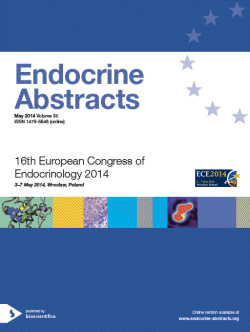ea0035mte3 | (1) | ECE2014
Premature ovarian insufficiency
ea0035mte4 | (1) | ECE2014
The zebrafish, a teleost model recapitulating the mammalian molecular events during endocrine development and function
Tiso Natascia , Busolin Giorgia , Ek Olivier , Marelli Federica , Porazzi Patrizia , Vettori Andrea , Facchinello Nicola , Schiavone Marco , Casari Alessandro , Astone Matteo , Milanetto Martina , Moro Enrico , Campione Marina , Persani Luca , Argenton Francesco
ea0035mte5 | (1) | ECE2014
The Year in the Adrenals
ea0035mte7 | (1) | ECE2014
Therapeutic dilemmas in NETs
ea0035mte10 | (1) | ECE2014
Pituitary disorders and osteoporosis
ea0035mte13 | (1) | ECE2014
Pituitary apoplexy: diagnosis and management
ea0035mte14 | (1) | ECE2014
Real-time monitoring of GPCR signalling in living cells
ea0035mte16 | (1) | ECE2014
Postmenopausal hyperandrogenism
Kaltsas Gregory , Markopoulos Marios
ea0035mte17 | (1) | ECE2014




